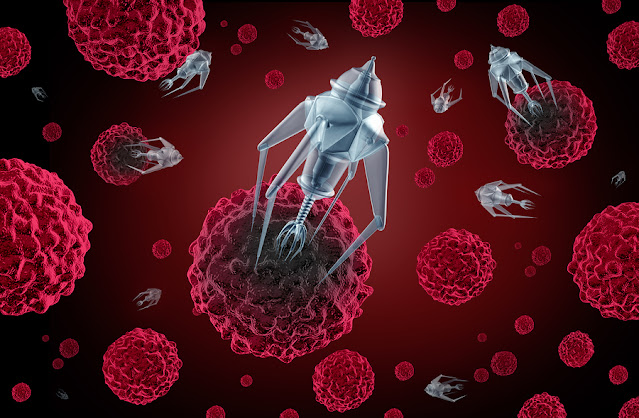Unlocking the Power of Dermatoscopy: A Comprehensive Guide to Non-Invasive Skin Examination for Early Skin Cancer Detection and Beyond
Dermatoscopy, also known as dermoscopy, is a
non-invasive skin examination technique that allows doctors to view skin
lesions at an enhanced magnification of up to 10 times compared to the naked
eye. By using dermatoscopy, doctors are able to detect lesions that may not be
visible to the naked eye. This detailed examination helps improve the
diagnostic accuracy of various pigmented and non-pigmented skin lesions. In this
article, we deep dive into understanding what exactly a dermatoscope is and how
it helps in early skin cancer detection.
What is a Dermatoscope?
A dermatoscope, sometimes referred to as a dermatological microscope, is a
handheld device that sits atop a magnifier lens attached to a light source. The
lights illuminate the skin and magnify the area of interest up to 10 times,
allowing doctors to examine skin lesions in greater detail. Dermatoscopes use
polarized light, cross-polarized light or immersion fluid to lighten skin
pigments and render them translucent. This makes subsurface structures visible
and enhances surface details, blood vessels and pigments in a lesion. The image
seen under a dermatoscope provides features not visible to the naked eye.
Types of Dermatoscopes
There are different types of dermatoscopes available depending on their design
and method of tissue contact:
- Contact Dermatoscopes: These require application of immersion fluid, usually
oil or alcohol, between the instrument lens and skin surface to eliminate
reflection at the skin-air interface. This results in high-resolution images
but risks contamination.
- Non-contact Dermatoscopes: Also called polarized light dermatoscopes, these
have a glass plate that touches the skin without needing fluid. However, image
quality is inferior to contact models.
- Dermatoscopy
Attachments: These fit on top of
standard dermatology examination lenses or smartphones to provide low-cost
dermatoscopy access. Image resolution is lower than standalone devices.
Benefits of Dermatoscopy
Early Detection of Skin Cancers: Dermatoscopy allows for early identification
of lesions that may be melanoma or non-melanoma skin cancers. Features like
colors, patterns and blood vessels invisible to the naked eye can be detected
for prompt diagnosis and treatment.
Monitoring of Lesions: Dermatoscopy enables continual monitoring of moles and
lesions. Any changes detected on sequential scans over months can provide
insight on early signs of melanoma development.
Improved Diagnostic Accuracy: Dermatoscopy improves diagnostic accuracy of
pigmented lesions from around 20-30% with the naked eye to around 80-85%. It
reduces unnecessary excisions of benign lesions.
Documentation & Teledermatology: High-quality digital dermatoscopy images
allow for documentation of lesions over time, multi-centre reviews and
teledermatology consultations from remote locations.
Education & Training: Dermatoscopic images are valuable resources in
melanoma education and for training healthcare professionals to recognize
suspicious lesions.
Applications of Dermatoscopy
In addition to aiding in diagnosing pigmented lesions, dermatoscopy has various
other clinical applications:
Detection of non-pigmented skin cancers: Features seen on dermatoscopy of basal
cell carcinomas, squamous cell carcinomas and other non-melanoma cancers help
in their identification and delineation of tumor borders.
Evaluation of inflammatory dermatoses: Specific dermatoscopy patterns have been
described for psoriasis, lichen planus, eczema, infections like tinea and more,
assisting diagnosis.
Examination of scalp & nails: Dermatoscopy improves visualization of
structures within thickly keratinized nails and hairy scalp, useful for fungal
infections, pigmented lesions and other conditions.
Lymph node assessment: Lymph node dermatoscopy aids in characterizing features
suggesting metastatic involvement improving melanoma staging.
Dermatoscopy Technique and Reading Skill Development
Proper technique is essential for effective dermatoscopy examination. Doctors
are trained to systematically scan the entire lesion surface with different
magnification levels for digital imaging. Regular use and participation in
educational programs helps them strengthen skills in interpreting subtle
dermatoscopic patterns and assigning the most likely diagnosis. Over time,
experience improves ability to recognize new or changing features not seen
before and judge lesion risk levels accurately. Dermoscopic images are also
reviewed jointly with experts for guidance in diagnostically challenging cases.
In conclusion, dermatoscopy is a simple yet powerful non-invasive diagnostic
tool available to healthcare practitioners for comprehensive skin examination.
With regular practice, it significantly enhances early detection of skin
cancers and allows for optimized management of patients with pigmented and
non-pigmented skin lesions. Integrating dermatoscopy into daily clinical
practice holds great promise for improving skin cancer outcomes through timely
diagnosis and treatment.
For
More details on the topic:
https://www.newsstatix.com/dermatoscope-a-valuable-diagnostic-tool-for-skin-conditions/
Check more trending articles related to this topic:
https://masstamilan.tv/data-governance-ensuring-trust-and-security-in-the-digital-era/




Comments
Post a Comment